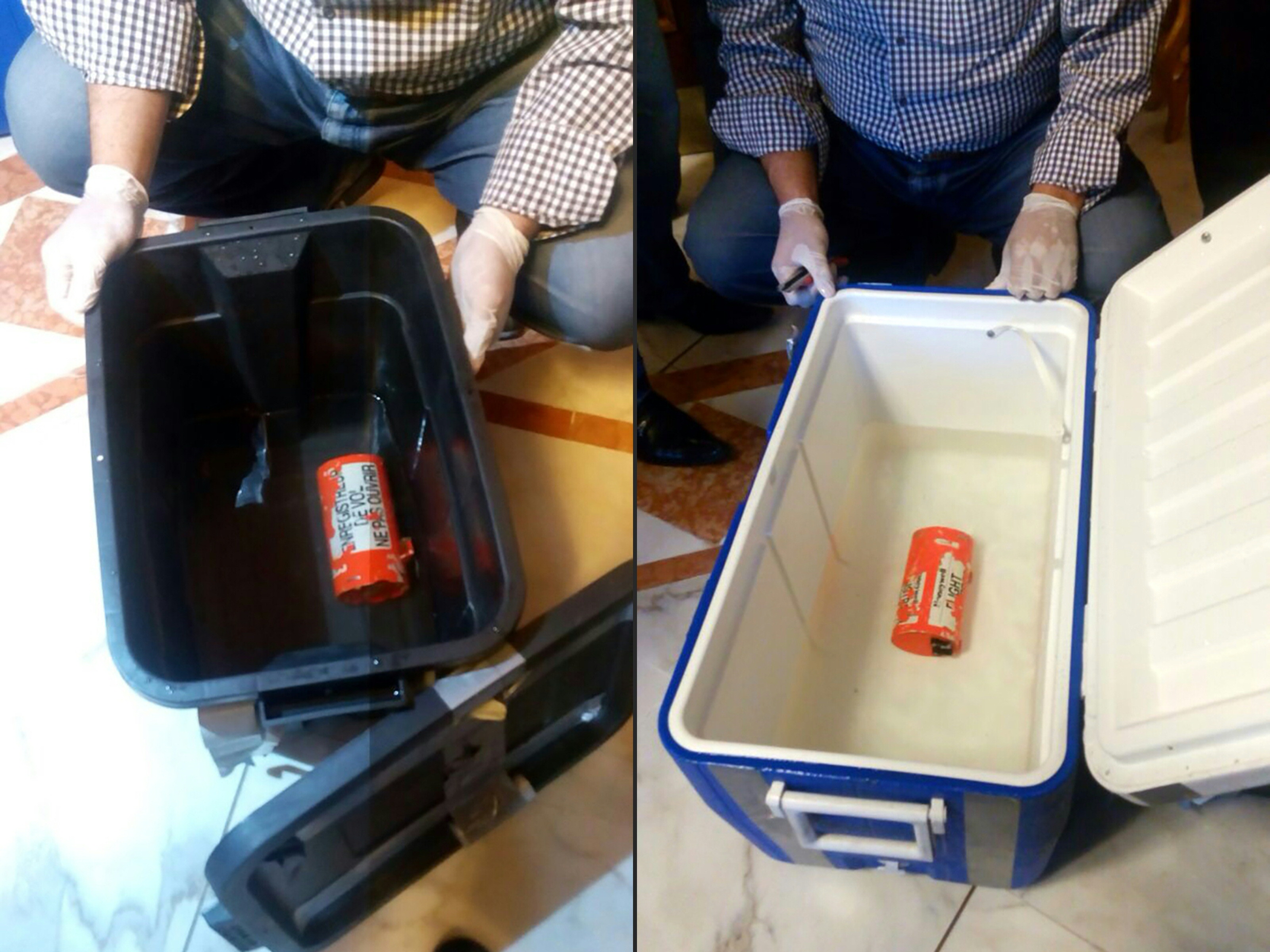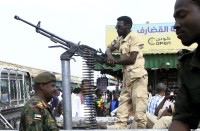
a handout picture taken at an undisclosed location in Egypt and released by the Egyptian Media Center of the ministry of Civil Aviation on June 17, 2016 showing one of the two black boxes from the EgyptAir plane, that crashed into the Mediterranean last month, after it was recovered from the bottom of the Mediterranean by search teams.
Egyptian investigators said search teams managed to recover the Airbus A320’s flight data recorder — which gathers information about the speed, altitude and direction of the plane — a day after they retrieved its cockpit voice recorder. EgyptAir Flight MS804 from Paris to Cairo disappeared from radar screens in the eastern Mediterranean last month with 66 people on board, and a vast search operation has since scoured swathes of sea off Egypt’s northern coast. / AFP PHOTO /
by Haitham El-Tabei
CAIRO, Egypt (AFP) — Search teams on Friday recovered the second flight recorder of an EgyptAir plane from the bottom of the Mediterranean that could prove vital in establishing the cause of the crash.
Flight MS804 from Paris to Cairo disappeared from radar screens in the eastern Mediterranean last month with 66 people on board, and a vast search operation has since scoured swathes of sea off Egypt’s northern coast.
Egyptian investigators said search teams managed to recover the Airbus A320’s flight data recorder — which gathers information among other things about the speed, altitude and direction of the plane — a day after they retrieved its cockpit voice recorder.
The data recorder, which experts see as a vital part of the probe, was found in several pieces, according to investigators.
It was not immediately clear how much of its data would be usable, but Cairo’s civil aviation authority said on Thursday that salvage experts had managed to retrieve the voice recorder’s crucial memory unit despite extensive damage to the black box.
“The flight data recorder was also retrieved in several stages but the vessel equipment managed to pick up the memory unit which is considered as the most important part,” France’s BEA air safety agency, which is assisting the crash probe, said in a statement.
The voice recorder was due to be transferred from the port city of Alexandria to Cairo, where Egyptian investigators supported by French experts and representatives of manufacturer Airbus will analyse its contents.
BEA said it had dispatched an expert to Cairo to assist the probe.
A statement from the Egyptian board of inquiry on Friday warned that “analysing the data could take several weeks”.
The cockpit voice recorder keeps track of up to two hours of conversation and other sounds in the pilots’ cabin, but also ambient noise within the aircraft.
“Depending on what we can get from this black box, it could allow us to know exactly what happened,” said aeronautics expert Jean Serrat.
An Egyptian aviation ministry source, who declined to be named, said that if the voice data was heavily damaged, it could be sent abroad for further analysis.
Investigators have repeatedly said it is too soon to determine what caused the disaster, but a terror attack has not been ruled out.
Weeks of searching
Search teams spent weeks scouring an area about 290 kilometres (180 miles) north of the Egyptian coast for the recorders.
The area where the plane crashed on May 19 is believed to be about 3,000 metres (10,000 feet) deep and there were fears that the black box batteries — which normally last between four and five weeks — would be exhausted before the recorders could be assessed.
France’s aviation safety agency has said the EgyptAir plane transmitted automated messages indicating smoke in the cabin and a fault in the flight control unit minutes before disappearing from radar screens.
On Monday, Egyptian investigators confirmed the aircraft had made a 90-degree left turn followed by a 360-degree turn to the right before hitting the sea.
Investigators were able to narrow down the search site thanks to an emergency signal sent via satellite by the plane’s locator transmitter when it hit the Mediterranean.
The passengers on the plane were 30 Egyptians, 15 French citizens, two Iraqis, two Canadians, and citizens from Algeria, Belgium, Britain, Chad, Portugal, Saudi Arabia and Sudan. They included a boy and two babies.
Seven crew and three security personnel were also on board.
The crash came after the bombing of a Russian airliner over Egypt’s restive Sinai Peninsula last October that killed all 224 people on board.
The Islamic State group claimed responsibility for that attack within hours, but there has been no such claim linked to the EgyptAir crash.
IS has been waging a deadly insurgency against Egyptian security forces and has claimed attacks in both France and Egypt.
In October, foreign governments issued travel warnings for Egypt and demanded a review of security at its airports.
© 1994-2016 Agence France-Presse






